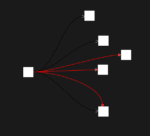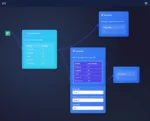
by tyler garrett | May 28, 2025 | Data Management
In the modern landscape, data reigns supreme, powering everything from analytical insights and strategic decisions to innovative customer experiences. Effective data sharing agreements (DSAs) act as the traffic lights governing your data highways, ensuring every byte reaches its intended destination securely, transparently, and compliantly. Whether you’re navigating complex multi-domain partnerships, integrating data as part of your strategic decision-making processes, or building out reliable analytics pipelines, crafting and implementing technically sound DSAs becomes paramount. This guide walks you through the technical best practices and strategic considerations your organization needs to implement robust, efficient data sharing agreements—unlocking collaboration, fostering innovation, and amplifying the value of your data resources.
Understanding Data Sharing Agreements from a Technical Perspective
Before diving deep into implementation, let’s clarify what a data sharing agreement (DSA) entails. Simply put, a DSA defines obligations, roles, responsibilities, and operational parameters between data-sharing entities. From a technical standpoint, DSAs must include common standards for data formatting, security protocols, monitoring procedures, and specifications for handling sensitive information. This clarity is the foundation that enables smooth, efficient, and secure data transfer.
Effective DSAs help prevent potential conflicts by setting clear expectations around service level agreements (SLAs). Your technical teams must precisely define and measure pipeline performance to ensure your DSAs remain viable over time. Learn more about setting effective measurement criteria in our article on processing SLAs: defining and measuring pipeline performance. Clearly defined metrics and measurement strategies create accountability, giving all parties confidence in your data exchange ecosystem.
When DSAs are technically sound, they facilitate adaptive scaling, handling variations in data transfer volume seamlessly. A well-documented and flexible technical infrastructure allows organizations to scale resources in real-time without bottlenecks—an essential aspect for modern, agile businesses.
Establishing Technical Infrastructure and Secure Data Channels
At the heart of implementing robust DSAs lies the establishment of a solid technical infrastructure capable of supporting secure and efficient data flow. Infrastructure decisions encompass selecting secure data transmission channels, defining appropriate encryption methods, and creating flexible architecture components capable of linear scalability.
When designing data pipelines that facilitate sharing, you should always prioritize reducing latency, maximizing throughput, and ensuring scalability. Explore our comprehensive guide on optimizing performance through vectorized query processing. Leveraging optimized data processing techniques ensures high-performance sharing between organizations, drastically improving the speed at which shared data translates into actionable insights.
Modern approaches, such as establishing RESTful APIs or leveraging cloud-based microservices infrastructure, empower organizations to collaboratively manage data more effectively. Additionally, adaptive parallelism strategies provide avenues for dynamical resource allocation to match real-time demand; learn more through our in-depth exploration of adaptive parallelism in data processing. By proactively designing scalable solutions, you are preparing your data-sharing environment to accommodate evolving data needs seamlessly.
Ensuring Data Compatibility, Standardization, and Accurate Parsing
In data sharing agreements, standardization and compatibility matter immensely. The technical teams from participating organizations should continuously engage in defining data standard practices—agreement upon file formats, naming conventions, schemas, and protocols. Ensuring that data formats and schemas match across organizations considerably reduces friction when integrating disparate datasets.
Attention to standardization significantly streamlines processes like URL parsing, a common scenario in analytically driven organizations. Check out our guide on effectively using scripting to parse URLs into structured columns, a simple example demonstrating the value of standardized technical implementations for efficient data sharing. Consistent parsing patterns ensure greater compatibility and reduction of effort during cross-organizational analytical exercises.
By embedding comprehensive standardization within your technical deployments, you’ll accelerate the process of transforming exchanged data assets into meaningful analytical outcomes, strengthening the value proposition of your DSAs significantly.
Implementing Robust Extraction, Transformation, and Loading (ETL) Processes
No technical implementation conversation surrounding DSAs would be complete without discussing extraction, transformation, and loading (ETL). Robust ETL processes are the backbone of successful and scalable data migrations across organizations. They allow your architecture to automate data ingestion, ensure data integrity, eliminate manual errors, and maintain compliance with your DSA terms.
For advanced technical guidance in managing and optimizing ETL workflows, consider engaging specialized expertise—such as our advanced ETL consulting services. Experienced consultants provide strategic insights into ETL architecture selection, tailored automation, building robust transformation logic, and performance monitoring. Expertise in diverse data stores allows your technical teams to select and implement optimal strategies, such as those explained in our article on upsert implementation patterns.
To support agile and efficient ETL leveraging lightweight frameworks, you might opt for Node.js. Its efficiency and effectiveness are covered thoroughly in our guide on streamlining data pipelines with Node.js. Such insights empower your data infrastructure to respond dynamically to changing data-sharing requirements.
Maintaining Secure and Accessible Data Storage Environment
Establishing secure and mutually accessible storage solutions is crucial for data sharing agreements. Given contemporary enterprise environments, robust security frameworks must be adopted and consistently monitored. Your technical teams should implement data encryption, enforce identity and access management protocols, and regularly assess infrastructure vulnerabilities.
A crucial aspect of managing your shared data environment involves maintaining database security. In many cases, this includes efficient administration tasks like password management to guarantee security; our simple yet key process guide on resetting MySQL root passwords demonstrates these seemingly simple but critical administrative responsibilities clearly.
Additionally, deploying solid security policies and regular auditing measures ensures confidential information remains safe and respects governance requirements as outlined within your DSAs. Always embed security as an architectural component to ensure shared trust and compliance alignment among collaborating organizations.
Creating Accurate Historical Records and Documentation
Well-constructed data sharing agreements require meticulous attention to data lineage, historical tracking, and technical documentation. Your IT and analytics teams should prioritize transparent documentation systems, enabling collaborating organizations to understand transformations, metadata, dependencies, and lineage clearly.
Good documentation considerably enhances user trust and project maintainability. We recommend exploring our piece on effective data documentation strategies, offering foundational insights into capturing context effectively.
Real value comes when historical data is leveraged to project future performance or insights. For example, robust documentation combined with systematic analytics enables actionable outcomes from shared datasets, as detailed in our guide about historical sales analysis. By proactively maintaining meticulous documentation, organizations extract additional strategic value from recorded historical patterns as data exchanges mature over time.
Preparing Your Implementation Journey: Asking the Right Technical Questions
Lastly, but critically, making efficient technical decisions always starts with asking insightful and strategic questions. Our experts work diligently upfront to pinpoint critical insights that frame technical implementation. For a strategic look at this preparation phase, examine our list of technical considerations in the important questions we ask clients before writing a single line of code.
These foundational queries help clear any ambiguity, ensuring implementations accurately align with business goals and comply effortlessly with your DSAs. The clarity gained through well-structured investigative questioning positions your organization advantageously for a seamless and effective data-sharing infrastructure rollout.
Investing strategic consideration in each phase—from infrastructure and security, through ETL pipelines, standardization, documentation, and upfront questions— ensures your technical implementation is robust, scalable, reliable, and synchronized to your business objectives. Let your data-sharing agreements become catalysts for innovation, collaboration, and growth within your organization.
Thank you for your support, follow DEV3LOPCOM, LLC on LinkedIn and YouTube.

by tyler garrett | May 28, 2025 | Data Management
In today’s increasingly data-driven world, clarity and accuracy are paramount. Data forms the backbone of strategic decisions, guiding business leaders through an ever-changing landscape of technology and innovation. Yet, with mounting volumes of data and growing complexity, businesses often grapple with translating strategic objectives into actionable technical implementations. That’s precisely where a comprehensive business glossary integrated seamlessly with detailed technical metadata comes into play. Imagine a navigational map tailored exclusively for your organization’s data ecosystem, bridging the communication gap between business stakeholders and technical teams. By effectively linking strategic terms, concepts, and definitions to the underlying technological implementations, organizations can unleash new efficiencies, streamline decision-making, and achieve enhanced transparency. In this post, we’ll explore the strategic importance of business glossary integration with technical metadata, examine how it unfolds in practical scenarios, and demonstrate how leaders can leverage these powerful resources to transform their organization’s data operations.
The Importance of Integrating a Business Glossary with Technical Metadata
As organizations grow in complexity and scale, clarity in communication between technical teams and business stakeholders is increasingly vital. A business glossary defines the critical terms, definitions, and metrics standardizing enterprise-wide understanding. However, without integration into technical metadata, such glossaries risk becoming isolated documents, disconnected from day-to-day operations and tech teams’ workflows. The integration of a robust business glossary with technical metadata bridges that gap, connecting strategic meanings directly to implementation details such as database schemas, table structures, pipelines, and even automated data quality checks. Establishing a common language through effective data governance practices facilitates clearer communication, reduces misinterpretation risks, and significantly speeds up decision-making timelines.
Furthermore, effective metadata integration supports enhanced data observability. With clearly defined relationships between concepts like customer lifetime value (CLV) and specific database columns or ETL transformations, teams achieve clarity regarding the origin, evolution, and usage of critical data points. Trust is elevated since stakeholders comprehend precisely where data originates and how it’s shaped, from raw input to valuable insights. When technical components and business definitions harmonize, the transparency and overall efficiency of analytics initiatives improve drastically, giving your organization a competitive edge through more accurate, timely decisions.
Technical Metadata: Bridging Business Concepts and Implementation Details
Organizations frequently face challenges in aligning their business strategies seamlessly with technical realities—a problem magnified as data architectures evolve in complexity. Technical metadata operates as the connective tissue between abstract business terms and specific data implementations. Detailed metadata fields such as column descriptions, data lineage, ETL processing logs, and schema evolution histories ensure consistency and clarity at every step. For example, concepts such as churn rate or acquisition metrics are more accessible and impactful when directly associated with OLAP cube definitions, SQL queries leveraging SQL joins, or custom data pipelines implemented through services such as AWS Glue or Lambda. Leveraging experienced consulting partners skilled in cloud-based solutions like our proven AWS consulting services can accelerate the designing and implementing of these robust metadata management frameworks.
Comprehensive integration allows technical stakeholders to pinpoint how changes in the business context will ripple through the technical infrastructure. For example, tracking the impact of altered definitions, measurement periods, or segmenting approaches becomes streamlined when teams utilize coherent metadata integrations. Particularly with complex capabilities such as time-partitioned processing for historical data, understanding interactions through structured metadata becomes indispensable. Accurately implemented technical metadata ensures complete understanding of data flows—bolstering data trust levels, reducing troubleshooting times, and enhancing problem resolutions when issues inevitably arise.
Enhanced Data Observability through Glossary Integration and Metadata Management
Data observability emphasizes proactive monitoring and understanding data health, reliability, and efficiency throughout the technology stack. Integrating your business glossary with technical metadata directly supports enhanced observability strategies. Clear mappings between business definitions (defined in a centralized glossary) and detailed technical metadata (such as data lineage, transformations, and validations) facilitate more holistic approaches to data monitoring. We have explored comprehensive approaches in building holistic data monitoring systems, which similarly illustrate the necessity for practical visibility into data processes.
Timely identification and resolution of emerging issues require business context awareness indicated through glossary integration. Technical metadata captured during ingestion, real-time stream validation strategies, and querying are far more potent when integrated directly with associated business concepts. Whether it involves automated notification about outliers, data freshness issues, or inconsistencies within business-critical dashboards rendered through technologies such as Tableau Server automated dashboard systems, metadata and glossary integration provide superior visibility—allowing your teams to proactively pursue insights rather than reactively addressing data downtime incidents.
Building Trust through Reliable Data Governance and Ethical Considerations
Strategic glossary integration also paves the way for trust from business stakeholders by clearly showing compliance with regulated and industry-standard data privacy and governance initiatives. Organizations embracing robust integration between their glossary and metadata framework consistently demonstrate transparency, accountability, and ethical stewardship. As highlighted in our detailed article exploring ethical considerations in data engineering and analytics, transparency ensures informed, equity-based decisions, fostering further confidence internally and externally.
Ideally, governance frameworks defined through associated glossaries help technical stakeholders pinpoint sensitive data, information ownership, and processing rules—ensuring strong alignment between ethical, legal, and business considerations. Compliance becomes more manageable, especially critical when industries face increasingly tight regulatory landscapes around data privacy and consumer information handling. Linkages between glossaries and precise data management details translate abstract guidelines into actionable insights, transforming compliance activities from vague checkboxes into transparent, auditable actions. Stakeholders across the organization then gain clarity, fostering powerful accountability that enhances overall business reputation and risk mitigation.
Practical Steps for Successful Business Glossary and Technical Metadata Integration
Successfully integrating a business glossary with technical metadata involves ambition, careful planning, and consistent execution. Begin by defining clear strategic objectives—involve business and technical stakeholders early for collaboration, guaranteeing adequate alignment of terms and their definitions. Conduct detailed data assessments and audits, identifying key critical processes adapted from our insights into long-running transaction management in ETL workflows to improve ETL efficiency and management.
Next, establish standardized metadata management practices employing best practices demonstrated through reliable collaboration frameworks like DevOps or DataOps. Use collaboration tools enabling detailed documentation and seamless integration throughout the data lifecycle—from collection through subsequent analysis. Employ session-driven analytics capabilities—such as our guidelines offered via session window implementations for user analytics—to empower stakeholders with practical observational data points, guiding metadata management strategies clarified through aligned glossary integration.
Continuous governance programs, regular business reviews, and incremental documentation updates help maintain consistency, alignment, and timeliness—ensuring metadata and glossary clearly reflect your evolving organizational landscape. Effective change management and training initiatives further enhance integration success, maintaining relevancy long after initial implementation.
Unlocking Strategic Business Value with Integrated Metadata
Linking comprehensive business glossaries to detailed technical metadata isn’t simply an exercise in data governance or documentation—it’s a strategic path towards enhanced decision-making, business agility, and sustained competitive advantage. When your business meanings seamlessly integrate with technical infrastructure, practically every organizational effort becomes consistently aligned, transparent, and efficient. Stakeholders trust information flows because each term is directly traceable to documented, verified technical implementations.
Competitive landscapes evolve rapidly; thus, organizations equipped with clearly integrated metadata infrastructures gain substantial agility in adapting shifting strategies, market fluctuations, or regulatory pressures. Demystifying complexities in technical vs. business thought processes through glossary integrations streamlines communications, shortens strategic timelines, and heightens operational efficiency. Ultimately, successful glossary and metadata management investments yield compounded business-value returns—establishing trust, fostering agility, improving efficiency, and empowering innovation across every organizational segment.
By diligently integrating detailed technical documentation with clear strategic semantic definitions in your business glossary, your organization paves a potent path towards future-proofing decision-making, transparency, and operational excellence.
Thank you for your support, follow DEV3LOPCOM, LLC on LinkedIn and YouTube.

by tyler garrett | May 28, 2025 | Data Management
In today’s data-driven landscape, enterprises are often managing multiple data platforms, each harboring crucial insight yet isolated in distinct silos. This complexity demands smarter strategies for data integration, accessibility, and governance, fueling a rapidly growing need for data catalog federation solutions. By federating data catalogs across various tools, businesses can unify their understanding of data assets without compromising flexibility or analytical agility. In this comprehensive exploration, we’ll delve into what data catalog federation entails, the strategic advantages it offers, technical considerations, and how forward-thinking organizations can leverage it to gain competitive advantage through optimized analytics. Let’s explore how you can enable powerful cross-platform visibility while maintaining data integrity, security, and operational efficiency.
What is Data Catalog Federation?
Data catalog federation refers to the process of integrating multiple data catalog platforms or tools together within a unified framework, allowing seamless visibility, searchability, and management of metadata across diverse data sources. While individual data catalogs provide capabilities such as metadata management, data lineage, and glossaries, federating these catalogs expands possibilities significantly—bridging disparate data across organizations into a single comprehensive, discoverable hub. Regardless of whether your organization employs traditional relational databases, cloud-native warehouses, data lakes, or specialized analytics platforms, federated catalog solutions enable a coherent view of your entire data ecosystem.
A federated data catalog leverages metadata extracted from a variety of sources—relational databases, NoSQL stores, warehouse technologies, and streaming analytics solutions—to optimize data discoverability and governance. Imagine the capability to effortlessly trace and map data lineage across an organization, whether tracing relational data from MySQL, navigating granular document data from MongoDB, or decoding complex streams utilizing edge analytics mesh data processing. Federation makes such an enhanced lineage possible, helping technical teams navigate their diverse data assets more effectively.
Additionally, federating data catalogs enables powerful cross-tool functionalities, such as unified enterprise data glossary management, collaborative metadata updates, and robust data governance facilitating consistency across tools and teams, maximizing your return on analytics investments.
Why Your Organization Needs Data Catalog Federation
As organizations scale, their data infrastructure becomes increasingly complex and heterogenous. Teams adopt varied specialized tools for their analytics tasks—using relational databases, document-based storage, cloud warehouses, and analytics dashboards tailored to different business use cases. Over time, this results in scattered, siloed metadata and obscured data interpretation, limiting analytical efficiency and collaborative insight.
Federation tackles these issues head-on. By unifying multiple data catalogs, technology leaders can enhance discovery, collaboration, and compliance across complex data landscapes. A federation strategy helps significantly cut down the time analysts and engineers spend data hunting or manual metadata reconciliation, thus driving organizational agility. Leveraging federation also increases trust in data quality through improved transparency into granular data lineage and improved ethical considerations in data analytics practices, such as monitoring bias and privacy concerns.
In addition, having consolidated visibility of metadata across multiple analytics environments positions teams to utilize modern, advanced analytics techniques, from enhanced real-time analysis capabilities to insightful multivariate correlation analysis methods like bubble chart matrices. Reducing barriers between datasets promotes innovation and accelerates data-driven decision-making, fueling your organization’s competitive edge.
Technical Strategies for Implementing Data Catalog Federation
Adopting a Platform-Agnostic Architecture
For successful federation, start by selecting platform-agnostic metadata frameworks and standards. Open standards such as Open Metadata, Apache Atlas, or platforms supporting REST APIs help assure data integration flexibility while eliminating technical roadblocks. Structured frameworks enable easier interoperability between different data governance tools, ensuring fluid federation curated to your organization’s evolving needs.
Metadata Extraction and Integration
effective integration, your process should include automated discovery and extraction of metadata across each tool. Robust automation tools not only simplify metadata ingestion over diverse platforms but also enhance accuracy and timeliness. For instance, your team might employ metadata extraction practices specifically tuned for your relational databases, readily supported through offerings like our MySQL consulting services. Additionally, federating columnar storage infrastructures and document-based databases is enhanced by understanding performance considerations, as discussed in detail within our columnar vs. document-based storage performance analysis guide.
Federated Search and Cross-platform Discoverability
To maximize federation effectiveness, architect robust search and discovery capabilities that seamlessly search across integrated catalogs. Implement technology that can intelligently link related metadata fields, manage schema variations, and resolve discrepancies across platforms, ensuring smooth, accurate cross-platform catalog navigation.
Practical Use Cases of a Federated Data Catalog
Data catalog federation unlocks new possibilities for enterprise analytics. Your business teams could accelerate analytics and dashboards through enhanced dataset discoverability and interactive cross-filtering capabilities across multiple analytical sources. For instance, federation can simplify the integration work underpinning interactive dashboards—such as described in our guide to interactive crossfiltering implementation for multi-chart dashboards.
A unified catalog utilizes metadata federated across warehouses, lakes, and applications to offer real-time presence indicators and operational analytics. These powerful indicators are thoroughly explained in our article focused on utilizing real-time presence indicators to improve applications, providing immediate analytic value across your organization.
Federation likewise enhances data governance, providing improved compliance tracking through unified metadata and simplified lineage tracking across business-critical warehouses. Strategic federation use enhances data warehousing adoption by providing more clarity, transparency, and ease of use, aligning closely with the structured insights laid out in our beginner’s guide to data warehousing.
Overcoming Challenges in Data Federation
Despite its notable advantages, successful federation also poses various challenges. Developing cohesive taxonomies that people can easily use across diverse organizational teams demands meticulous governance effort and comprehensive collaboration.
Additionally, integration of different security approaches and ensuring robust data privacy management requires careful planning and strong commitment to standardization. Organizations should prioritize consistent metadata interpretation standards, data lineage mechanisms, and centralized governance principles to properly manage metadata sensitivities. Such considerations align well with our recommended software engineering best practices for ethical data collection and analysis, ensuring federation success amid complex compliance requirements.
Your federation initiative should start small, incrementally onboarding platforms, proving value, aligning teams, and scaling the federation implementation strategically over time. Leadership alignment and proactive training ensure successful adoption and reduce cultural resistance, facilitating long-term federation sustainability.
Unlocking Innovation with Data Catalog Federation
By investing wisely in data catalog federation initiatives, technology-driven organizations can dramatically enhance their analytics capacity, collaboration, regulatory compliance, and strategic innovation capabilities. Federated data catalogs reinforce data consistency, transparency, accessibility, and timeliness across diverse teams, breaking down information silos and positioning your business to make agile, intelligent decisions informed by comprehensive data visibility.
Federation paves the way for powerful analytics innovation—enabling everything from advanced multi-source visualizations, granular A/B testing, and dynamic experiments. Organizations can utilize valuable insights and visualization best practices, like those outlined in our comprehensive guide, 10 Tips for Creating Effective Data Visualizations, fostering deeper analytical correlation and insights at scale.
Ultimately, federating your data catalogs equips the entire organization to do more with data, driving innovation, transformation, and unmatched competitive advantage. Embrace federation today to leverage your complete information ecosystem strategically—ushering you beyond data complexity into strategic intelligence.
Thank you for your support, follow DEV3LOPCOM, LLC on LinkedIn and YouTube.

by tyler garrett | May 28, 2025 | Data Management
In an era shaped by expanding digital interactions, regulations on data management continue to evolve in rigor and complexity. As decision-makers within the fast-paced fields of data analytics, software development, or digital innovation, staying ahead in managing data security standards can dramatically affect outcomes—from customer trust to compliance penalties. Implementing a robust, regulatory-driven data classification framework doesn’t just fortify your organizational resilience; it unlocks strategic agility by identifying sensitive data risks early and clarifying data workflows end-to-end. Let’s explore how proactively integrating regulatory data classification into your existing data architectures can position your organization as both compliant and innovation-ready.
Why Regulatory Compliance Necessitates a Rigorous Data Classification Strategy
Handling sensitive information no longer remains merely as best practices guidance—it’s required by legislation worldwide, dictating strict compliance standards and hefty fines in case of violations. Regulations such as GDPR, HIPAA, and California Consumer Privacy Act (CCPA) are prime examples mandating detailed management and documentation of data handling processes. Organizations that fail to adapt can unintentionally expose critical vulnerabilities, resulting in compromised data and financial liabilities.
To address these challenges, a rigorous regulatory-driven data classification framework becomes indispensable. Proper classification allows businesses to precisely identify sensitive or regulated data based on formally defined compliance criteria, ensuring that data handling policies align directly with regulatory demands. A well-structured classification scheme significantly reduces ambiguity around data handling responsibilities, improving overall risk management and compliance readiness. Further insights gained from clearly defined data classification categories enhance your organization’s ability to dynamically adapt its information architecture, unlocking richer analytics and actionable innovation paths that you can explore further through our specialized MySQL consulting services.
Foundational Elements of the Regulatory-Driven Data Classification Framework
A solid regulatory-driven data classification foundation typically encompasses a set of clearly defined categories and protocols governing the identification, labeling, and management of data at every stage of its lifecycle. At its core, your framework must precisely distinguish between data types like confidential, personally identifiable (PII), protected health information (PHI), intellectual property, and publicly accessible data. By meticulously defining what classifies as sensitive under specific regulatory requirements, your organization can establish robust safeguards that directly address specific regulatory guidelines.
This structured approach also mandates integrated security standards such as encryption techniques or payload tokenization techniques for secure data processing. Tokenizing sensitive data significantly reduces risks related to data leaks or unauthorized access, as tokens inherently possess little intrinsic value to potential attackers. Armed with foundational elements—clear classification schemes, category definitions, and secure handling processes—you significantly reduce operational confusion, legally protect business assets, and solidify compliance posture across various jurisdictions and industries.
Implementing Data Classification: A Step-by-Step Strategic Overview
Step 1: Inventory and Mapping
Effective classification begins with data discovery, asset inventory, and mapping data to applicable regulatory frameworks. Comprehensive initial audits are essential to fully documenting how data flows within your organization, outlining the data sources, storage solutions, and end-points. This mapping helps answer critical decision-making questions around data usage contexts and regulatory exposure, guiding your future technology choices clearly—whether that means settling the nuanced debate between SQL and NoSQL database implementation or integrating specialized databases for certain regulatory workloads.
Step 2: Rigorous Classification Schema Development
Develop regulatory-specific data categories, crafting definitions and thresholds for classification levels across your organization’s entire data estate. Incorporate critical business stakeholders to tailor classification policies closely to organizational needs, fostering transparency, buy-in, and collaboration in adhering to compliance obligations. Clarity in definitions ensures adherence to stringent requirements, while setting consistent guardrails alongside clear policy statements facilitates streamlined compliance efforts.
Step 3: Enhance Security & Compliance Controls
Robust classification strategies mandate a close integration with security and encryption technologies. Identifying explicitly defined sensitive data enables teams to apply strict security techniques proactively and systematically throughout the data processing pipeline. Innovative approaches like distributed processing channels require data skew detection and handling methods or scalable checkpoint-based recovery for data transformations, ensuring high-performing, compliant data operations that meet rigorous security and availability standards.
Leveraging Automation and Event-Driven Capabilities for Classification
To stay ahead in regulatory compliance, organizations must leverage analytics technologies capable of automating data classification at scale. Manual processes inevitably introduce human error, significantly increasing liabilities in handling complex data regulations. Automation involves leveraging advanced machine learning models, cognitive data cataloging tools, and metadata-driven integration platforms that continuously scan, identify, and classify data across diverse repositories.
Adopting an event-driven analytics architecture becomes highly beneficial in realizing efficient, real-time data classification decisions. Event-driven, real-time analysis enables organizations to instantly act upon incoming data streams using sophisticated strategies like change data capture (CDC) topologies for event-driven analytics. CDC strategies facilitate reactive, compliance-sensitive analytics processing that provides prompt signals, adherence confirmations, and proactive alerts, securing critical data operations with minimal latency and maximized compliance coverage.
The Innovative Potential from a Strong Regulatory-Driven Classification Framework
A comprehensive regulatory-driven data classification framework isn’t just a compliance overhead; rather, it profoundly enhances analytics capability and innovation agility. Classifying your data assets thoroughly allows clearer visibility, confidence in your security posture, and encourages risk-aware experimentation and innovation strategies. Clarified data governance fosters trust internally and externally, inspiring agents at every organizational level, from data analysts to strategic leaders, to innovate without fear of non-compliance.
By seamlessly integrating your regulatory management processes into your broader technology landscape and analytics workflows, your organization unlocks new paths for business intelligence enhancements, custom visual encoding opportunities for effective analytics presentations—including possibilities like custom legend designs for complex visual encodings. Streamlined and trusted data infrastructure with clearly documented lineage allows analysts greater freedom to experiment with cutting-edge technologies, driving growth from informed data-driven innovation.
Ensuring Scalable Compliance Strategies
Regulations regularly evolve alongside an organization’s shifting business requirements, necessitating scalable compliance strategies within the classification framework. Your organization’s regulatory-driven data classification strategy must remain future-oriented and adaptable, continually prepared for forthcoming regulatory expansions, adjustments, or new industry scenarios. Staying aligned with emerging regulatory demands ensures ongoing compliance reliability through technological modernizations and unlikely disruptions by future regulatory shifts.
Building robust yet flexible solutions such as documented processes, data governance automation, smart monitoring alerts, and rapidly reconfigurable classification standards creates stability. Organizations with adopting agile regulatory approaches can effortlessly scale up their data handling capacities according to current and future data regulations frameworks and evolving client and customer expectations, solidifying competitive edge and innovation-driven positioning in legacy and emergent market spaces alike.
Partnering Strategically to Implement Your Data Classification Framework
Integrating complex regulatory demands into your analytics and data management landscapes requires deep domain expertise. Leveraging consulting services from a strategic technology partner brings immediate value in speeding up implementation and significantly lowers risks of unsuccessful deployments. Our team at Dev3lop specializes in assisting organizations with integrating sophisticated data and analytics processes tailored specifically to each client’s unique regulatory and business requirements. Visit our dedicated MySQL consulting services page to see firsthand how we tailor solutions that effortlessly fit organizational standards.
Let our expertise in analytics innovation, technology architecture, and regulatory implications for data management provide clarity, agility, and compliance confidence for your data operations. Contact us today, begin navigating regulatory challenges strategically, and unlock unparalleled innovation potential within your data-driven landscape.
Thank you for your support, follow DEV3LOPCOM, LLC on LinkedIn and YouTube.

by tyler garrett | May 27, 2025 | Data Management
In the data-driven era of rapid digital transformation, protecting sensitive information is as pivotal as harnessing its analytical potential. Whether you’re an executive steering strategy in healthcare, a data professional exploring market insights, or an innovator designing next-gen products, safeguarding data privacy isn’t merely a compliance checkbox—it’s essential to sustaining trust and driving competitive advantage. This necessity brings statistical disclosure control (SDC) into the spotlight. SDC encompasses sophisticated methodologies that allow stakeholders to unleash valuable data insights while simultaneously preserving confidentiality, crucial in industries from healthcare and finance to commercial middleware platforms. This article explores the best practices, challenges, and leading techniques in implementing statistical disclosure control, arming decision-makers with the expertise needed to responsibly tap into data’s full potential.
Understanding Statistical Disclosure Control (SDC)
Statistical Disclosure Control (SDC) refers to the collection of methodologies employed to ensure personal or sensitive information remains confidential when statistical data is publicly released or shared among organizations. The objective behind SDC techniques lies in balancing data usability and privacy risks, enabling insights and analytics without compromising confidentiality. Businesses spanning sectors from financial services to healthcare, and even city governments addressing complex issues like housing affordability, rely heavily on such methodologies to secure sensitive information. A deeper understanding of SDC reflects heightened organizational awareness of ethics in data collection—similar to these software engineering best practices emphasizing responsible and accountable data analysis.
Given massive volumes of available data, modern businesses increasingly turn to robust platforms such as PostgreSQL. Compared to alternatives, PostgreSQL provides improved security and feasibility for implementing strict privacy measures, as highlighted in our comparison of PostgreSQL vs SQL Server. Understanding SDC not only ensures compliance with strict data regulations but also solidifies trust among stakeholders who rely on your organization’s analytical integrity and transparency.
The Necessity of Statistical Disclosure Control in Today’s Data Landscape
In our data-reliant world, maintaining customer confidentiality and security is paramount. Companies whose core businesses revolve around processing high-speed data streams or intricate analytical tasks run pronounced privacy risks. Real-time analytical processes, such as those mentioned in our article on real-time data processing with Node.js, underscore the necessity of integrated privacy-preserving frameworks. Statistical disclosure control forms a cornerstone of these frameworks, transforming raw data safely into actionable insights.
Similarly, advanced visualizations—for instance, interactive network graphs generated with D3.js—must cautiously navigate disclosure risks, as even anonymized visual patterns could inadvertently expose sensitive connections or privy information. Strategic implementation of SDC not only guards against unintended disclosures but also reinforces data governance. With technologies increasingly demanding high-performance, security-focused data interactions, organizations face growing pressure to employ proactive SDC strategies that effectively mitigate risks while retaining data utility and analytical accuracy.
Top Techniques for Implementing Statistical Disclosure Control
Data Suppression and Generalization
Data suppression involves identifying and removing elements from datasets that potentially pose disclosure risks. Typically used with identifiable or sensitive items, suppression significantly reduces the chances of identifying individuals or sensitive attributes. Generalization takes this technique a step forward by aggregating data elements into broader categories. For example, displaying age in ranges (25-34, 35-44) or using approximate geographic areas instead of detailed ones limits specificity without entirely losing analytical value.
Organizations leveraging PostgreSQL databases will benefit from our PostgreSQL consulting services for expert guidance and implementation of suppression and generalization directly within their database environment to streamline privacy management processes.
Microaggregation
Microaggregation clusters individual data records into groups based on similarities, replacing original data points with aggregated values. By averaging numerical values across small clusters, you obscure individual-level insights while preserving broader statistical accuracy. Used correctly, microaggregation anticipates privacy concerns, particularly impactful in financial and healthcare sectors where both sensitive data confidentiality and analytical precision are crucial.
Decision-makers can proactively mitigate privacy breaches by leveraging microaggregation techniques alongside strategic forecasting. Our article on inventory management via strategic forecasting highlights analytical scenarios where aggregated data maintains predictive insight without compromising confidentiality.
Noise Addition & Perturbation
Noise addition introduces controlled random elements, or “noise,” into data, slightly distorting original values, yet preserving statistical properties for broader analysis. Similarly, perturbation modifies data slightly to ensure confidentiality while minimally impacting insight quality. These methods prevent reconstruction of original sensitive details and are widely employed within large-scale streaming processes—such as financial fraud prevention—for safer insights extraction, as highlighted in our guide on data streaming’s role in fraud prevention.
Data Swapping & Synthetic Data Generation
Data swapping (also known as shuffling) rearranges sensitive data between records, significantly obstructing attempts at unauthorized reconstruction but preserving the essential statistical distribution within datasets. Synthetic data generation proactively addresses confidentiality with artificial yet statistically representative data points. These techniques are particularly useful in achieving greater reliability in consistent analytics pipelines, complementing principles from our resource on designing dependable data pipelines.
Addressing Challenges in SDC Implementation
Although beneficial, effective SDC implementation doesn’t occur without hurdles. Organizations must carefully balance privacy maintenance and the possibility of degraded analytical accuracy due to information loss. Overgeneralization or excessive suppression may compromise analytical depth, making governance increasingly challenging. Data professionals, therefore, should precisely choose SDC techniques that match their industry standards, regulatory frameworks, and specific analytical requirements.
Avoiding common missteps in data engineering is essential: understanding common pitfalls will save significant resources and prevent wasted effort. Our resource detailing common data engineering anti-patterns can be instrumental in successfully implementing robust SDC systems, ensuring that data privacy management aligns strategically with organizational analytics and innovation goals.
Future Innovations and Trends in Statistical Disclosure Control
As artificial intelligence and machine learning continue to evolve, organizations are increasingly focused on developing data privacy implementations that align with future insights demands. Techniques like differential privacy—a sophisticated probabilistic mechanism that allows actionable aggregate analytics without individual-level exposure—now emerge significantly, reshaping traditional SDC practices. Advanced processing methods, like those described in our discussion around accelerating data workloads via vectorized query processing, also help seamlessly integrate privacy methodologies with real-time analytical operations.
Adaptive privacy and pseudonymization algorithms further showcase upcoming potential, underscoring the importance of continuously refining privacy-centric analytical workflows. Innovations in automated, SC-driven disclosure risk assessment methods and privacy-aware machine learning algorithms will allow businesses across sectors to extract unprecedented value from data without sacrificing confidentiality.
Conclusion: Harnessing the Strategic Value of SDC
Incorporating robust statistical disclosure control implementations is no longer optional but critical—even strategic—to modern enterprises seeking sustained success through responsible data practices. By leveraging advanced techniques and adapting to emerging trends, business leaders and decision-makers can turn privacy compliance from a mere regulatory hurdle into a unique strategic differentiator. Carefully balancing anonymization, generalization, microaggregation, and sophisticated noise addition ensures organizations confidently extract high-quality insights while fully safeguarding their stakeholder trust and privacy commitments.
Thank you for your support, follow DEV3LOPCOM, LLC on LinkedIn and YouTube.

by tyler garrett | May 27, 2025 | Data Management
In an ever-evolving landscape, harnessing customer data has become the foundation of meaningful interactions, business intelligence, and strategic decision-making. Yet, despite possessing vast amounts of data, many organizations struggle to achieve a cohesive, comprehensive understanding of their customers. Fragmented data silos, duplicate customer profiles, and inconsistent datasets can significantly impede the ability to engage customers effectively and personalize their experiences. Identity graph construction offers a powerful solution to these challenges by unifying disparate customer data sources into a single, cohesive entity. As seasoned experts in data, analytics, and innovation, our mission is to demystify the complexities surrounding identity graphs and provide you with clear, actionable insights for realizing the full potential of your customer data. Let’s explore the essentials of identity graph construction, why it matters in today’s customer-centric economy, and how it amplifies advanced analytics capabilities to drive greater business value.
What Exactly is an Identity Graph?
An identity graph is a comprehensive data solution that consolidates various touchpoints and interactions across multiple channels, devices, and platforms into a unified profile for each customer. By strategically linking customer identifiers such as usernames, emails, device IDs, transactional data, and browsing activities, identity graphs ensure your data ecosystem possesses a single and coherent view for accurate decision-making. It serves as the essential backbone that fuels personalized customer journeys and transforms fragmented information into insightful customer profiles, thereby empowering businesses to deliver highly targeted, relevant experiences.
Creating an identity graph normally involves integrating complex data from multiple platforms, both structured and unstructured, forming connections and patterns uniquely suited to your organization’s goals and challenges. Organizations investing in advanced analytics consulting services gain a significant competitive advantage by harnessing consumer trends, identifying upselling opportunities, and proactively predicting future customer behaviors. This robust data asset places decision-makers in an informed, agile position, allowing continuous innovation in product strategies, marketing tactics, and customer relationship management.
Key Components in Building Identity Graphs
Data Collection and Ingestion
Constructing a reliable identity graph begins with efficiently gathering and ingesting customer data from various digital and traditional channels. This process requires sophisticated data pipelines, advanced ETL (extract-transform-load) techniques, and rigorous quality control practices to ensure clean and accurate data inputs. Whether your organization leverages customer relationship management systems, social media interactions, real-time streaming data, or transactional records, adequately handling multi-faceted, heterogeneous data streams is fundamental to creating trustworthy customer identifiers.
Businesses incorporating multi-modal data fusion strategies facilitate the alignment of structured and unstructured data sources to create enriched customer profiles. Tools like Tableau, a powerful data visualization and analytics platform, can assist significantly in uncovering meaningful data insights during this crucial ingestion phase. For those exploring visualization agility, consider exploring a quick guide to download Tableau Desktop, empowering your team to rapidly build effective data visualizations.
Data Matching and Resolution
Matching distinct data points to specific identities involves advanced strategic data engineering. Algorithms leveraging machine learning and deterministic matching techniques systematically compare attributes, identify patterns, and create comprehensive customer profiles. Resolving duplications and inconsistencies within your data hinges on the implementation of intelligent matching frameworks, enabling your identity graph to deliver precise representation and clearer analysis outcomes.
Understanding and implementing management of data changes over time is crucial to maintaining accurate customer profiles. Modern solutions that leverage slowly changing dimensions (SCD) techniques actively handle changes in customer data—ensuring the identity graph consistently reflects recent customer interactions and lifecycle progressions. Such robust matching practices significantly improve the accuracy and quality of analyses, enabling more precise targeting and personalization.
Graph Database Management
Identity graphs require flexible, high-performance database systems capable of scaling at pace with data growth and constantly evolving user profiles. Graph databases, a specialized form of NoSQL databases, provide the agility to effectively map and store complex relationships inherent in identity data. Unlike relational databases, graph databases store data in a node-edge-node model, naturally accommodating intricate relationships, interactions, and varying attributes without losing critical detail.
Effective database management strategies should also incorporate strategies for optimizing performance and efficiency. Organizations chasing higher profitability and smoother database operations can benefit significantly from the forward-looking insights provided in data engineering trends in 2025. By proactively investing in emerging database technologies, businesses future-proof their identity graph construction, elevating analytics capabilities, scalability, and stability in customer data integration processes.
Why Identity Graphs Are Critical to Advanced Analytics Initiatives
Without an identity graph, customer data usually remains fragmented, siloed, or disconnected, significantly limiting the depth and detail of analytics efforts. Identity graphs consolidate your customer intelligence, enabling you to leverage comprehensive, unified datasets for advanced analytics initiatives, from machine learning applications and artificial intelligence modeling to personalization engines and marketing automation solutions.
Rich identity graphs empower deeper customer segmentation based on nuanced and previously hidden insights, facilitating hyper-personalized experiences critical for maintaining competitive advantage. Accurate identity resolution is also essential for accurately attributing conversions and marketing ROI across channels, providing vital insights into where high-value customers originate. When businesses invest strategically in building and sustaining a strong identity graph, they position themselves uniquely to experience exponential gains in customer insights, performance metrics, and value driving decision-making.
Visualizing Your Customer Insights through Identity Graphs
While identity graphs form the core of analytical practices, visualizing this complex, comprehensive customer data set is equally important for operational clarity and impactful decision-making. Adhering to best practices in visualization development ensures audiences effectively perceive insights quickly, accurately, and confidently. This is where strategic approaches to visualization play a critical role. Discovering 10 tips for creating effective data visualizations will boost confidence and clarity when showcasing your identity graph outcomes.
Moreover, visualization accessibility significantly impacts the inclusivity, usability, and impact of generated insights. Businesses can enhance visualization effectiveness by embedding visualization accessibility guidelines and implementation strategies. By ensuring all users can access, understand, and interpret contexts quickly, you maximize the reach and communicative impact of your identity graph-based insights, driving consideration and adoption throughout your organization.
Future-Proofing Your Investment with Identity Graph Technology
Future-proofing your organization’s technology investments is critical in maintaining sustainable operational excellence and innovation. The continuous evolution of customer experience technologies, analytics capabilities, and consumer privacy regulations necessitates choosing identity graph platforms and processes that foster adaptability, scalability, and compliance readiness.
Robust identity graph construction will help your organization proactively respond to external regulatory pressures, such as privacy compliance laws like GDPR and CCPA. Ensuring compliant, transparent data management practices builds lasting customer trust and mitigates risk. By staying closely attuned to rapidly evolving technologies and recommendations emerging from advanced analytics consulting services, organizations benefit strategically from innovative guidance, agile infrastructure, and compliant data practices—solidifying their customer-data integration foundations against future uncertainties and complexities.
Take the Next Step with Identity Graph Construction
Embracing identity graph technology is essential for organizations looking to unify fragmented customer data, supercharge customer insights, and deliver exceptional, targeted customer experiences. Our experienced team of strategists and technologists is here to simplify complexity—delivering clarity and value through carefully tailored identity graph solutions. By implementing state-of-the-art integration strategies, advanced data engineering, and analytically driven decision-making, your business can unlock new levels of customer understanding, competitive advantage, and operational excellence. Contact us today to discover how identity graph solutions can revolutionize your approach to customer data, fueling exceptional analytics and sustained innovation.
Thank you for your support, follow DEV3LOPCOM, LLC on LinkedIn and YouTube.






























